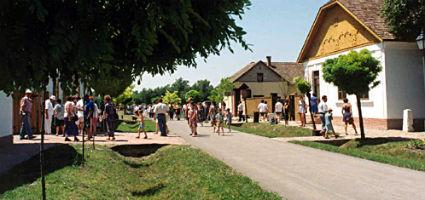2026. January 8. Thursday
Ópusztaszer National Historic Memorial Park - Ópusztaszer
 |
Address: 6767, Ópusztaszer Szoborkert 68.
Phone number: (62) 275-133 /103, (62) 275-133 /104
E-mail: info@opusztaszer.hu
Opening hours: 01.04-30-10.: Tue-Sun 10-18
01.11-30.03.: Tue-Sun 10-16 (Skanzen, external exhibiton closed) The current fare for those interested informed about the institution's website: www.opusztaszer.hu |
According to a tradesman, Szeged was placed on the map in because of its paprika. The paprika originated in Middle America. In Hungary it became acclimatized in the second half of the 16th century, but was used as a grocery only in the second half of the 19th century. Professionalism, diligence, and the conjecture made the paprika producers the most bourgeois layer of society in Szeged.
The house in Szeged downtown was built in the first half of the 1880's. Its facade is ornamented with sunshine on a plank gable. This kind of ornamentation is rooted in the ecclesiastical Baroque art. The house with the room-kitchen-room-chamber-room setting accommodated three generations. The wall of the room with the jointed floor was painted with patterns according to the taste of the peasants at the beginning of the 20th century. Its furnishing was demanding carpenter-made furniture in the style of Secession. The back room belonged to the parents.
The characteristic part of the peasant houses at the end of the 19th century was the porch with poles. The paprika drying on thread was a colorful view at Fall.
The tools of work and the method of work is presented in the chamber of the house the.
The house in Szeged downtown was built in the first half of the 1880's. Its facade is ornamented with sunshine on a plank gable. This kind of ornamentation is rooted in the ecclesiastical Baroque art. The house with the room-kitchen-room-chamber-room setting accommodated three generations. The wall of the room with the jointed floor was painted with patterns according to the taste of the peasants at the beginning of the 20th century. Its furnishing was demanding carpenter-made furniture in the style of Secession. The back room belonged to the parents.
The characteristic part of the peasant houses at the end of the 19th century was the porch with poles. The paprika drying on thread was a colorful view at Fall.
The tools of work and the method of work is presented in the chamber of the house the.